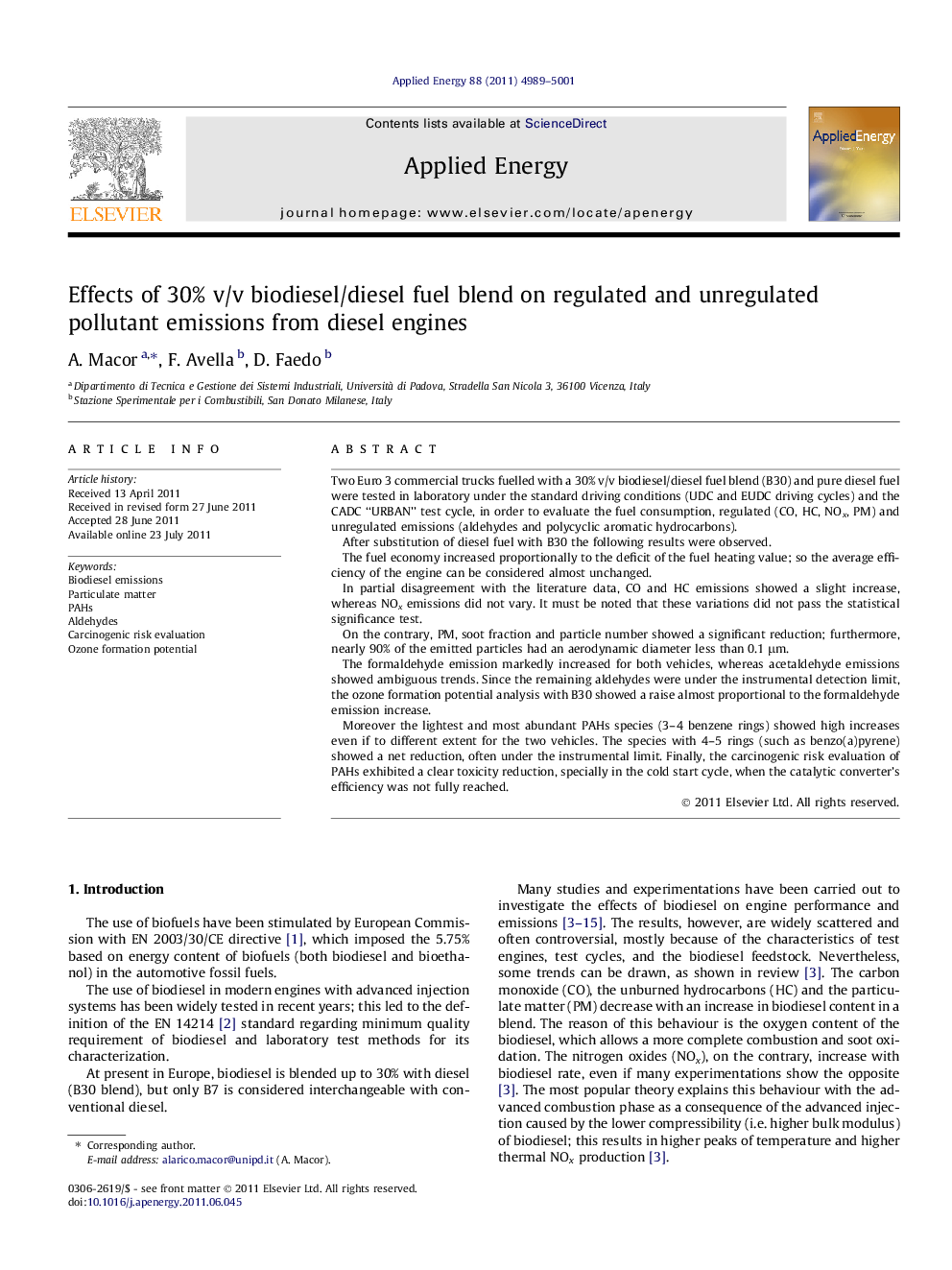| کد مقاله | کد نشریه | سال انتشار | مقاله انگلیسی | نسخه تمام متن |
|---|---|---|---|---|
| 244024 | 501940 | 2011 | 13 صفحه PDF | دانلود رایگان |

Two Euro 3 commercial trucks fuelled with a 30% v/v biodiesel/diesel fuel blend (B30) and pure diesel fuel were tested in laboratory under the standard driving conditions (UDC and EUDC driving cycles) and the CADC “URBAN” test cycle, in order to evaluate the fuel consumption, regulated (CO, HC, NOx, PM) and unregulated emissions (aldehydes and polycyclic aromatic hydrocarbons).After substitution of diesel fuel with B30 the following results were observed.The fuel economy increased proportionally to the deficit of the fuel heating value; so the average efficiency of the engine can be considered almost unchanged.In partial disagreement with the literature data, CO and HC emissions showed a slight increase, whereas NOx emissions did not vary. It must be noted that these variations did not pass the statistical significance test.On the contrary, PM, soot fraction and particle number showed a significant reduction; furthermore, nearly 90% of the emitted particles had an aerodynamic diameter less than 0.1 μm.The formaldehyde emission markedly increased for both vehicles, whereas acetaldehyde emissions showed ambiguous trends. Since the remaining aldehydes were under the instrumental detection limit, the ozone formation potential analysis with B30 showed a raise almost proportional to the formaldehyde emission increase.Moreover the lightest and most abundant PAHs species (3–4 benzene rings) showed high increases even if to different extent for the two vehicles. The species with 4–5 rings (such as benzo(a)pyrene) showed a net reduction, often under the instrumental limit. Finally, the carcinogenic risk evaluation of PAHs exhibited a clear toxicity reduction, specially in the cold start cycle, when the catalytic converter’s efficiency was not fully reached.
► Two vehicles fuelled by diesel and B30 on chassis dynamometer for emissions measurement.
► Gaseous regulated emissions almost unchanged.
► PM reduced by 30%.
► Formaldehyde and Ozone Formation Potential of aldehydes increased by 20%.
► Carcinogenic PAHs and carcinogenic risk evaluation reduced by 20%.
Journal: Applied Energy - Volume 88, Issue 12, December 2011, Pages 4989–5001